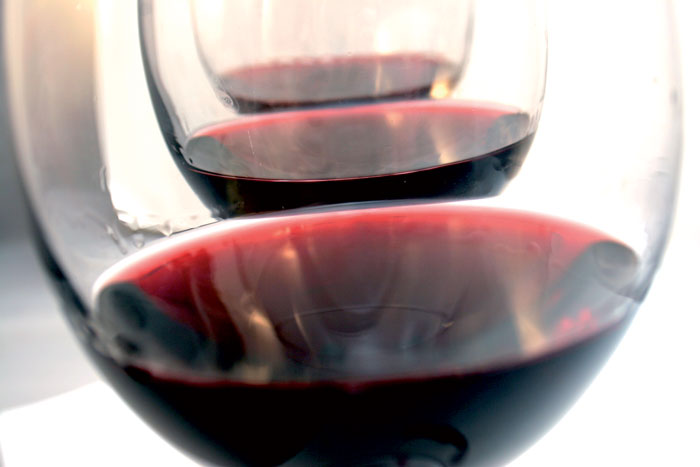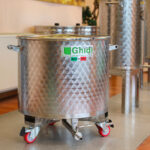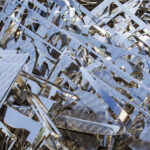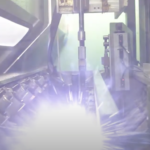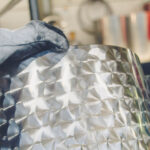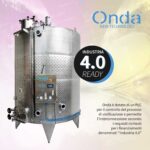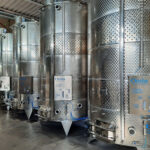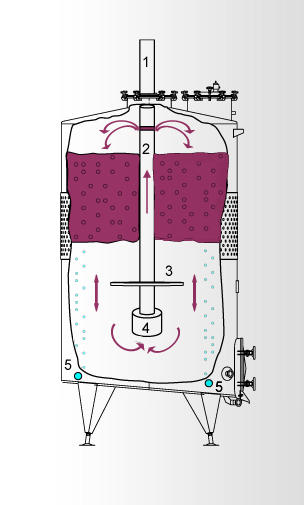Sulfites in wine and wine without added sulfites.
The Onda® winemaker is a valuable tool for both wineries producing “conventional” wines and those wishing to reduce the use of this preservative.
“What are sulfites in wine?” Below is a summary of “what are sulfites” and “what are the concentrations of sulfites in conventional, organic and natural wine.”
Sulfites in wine: what they are
Sulfites are commonly used in the food industry as preservatives due to their antimicrobial and antioxidant properties. They manage to preserve the original qualities of the food by safeguarding it from the spread of potentially harmful bacteria.
Sulfites in wine are not only added artificially but are produced naturally by yeast during alcoholic fermentation.
Often, however, the amount produced naturally is not sufficient. In fact, sulfites are generally added as early as the grapes arrive at the winery: this is to allow a selection of the microbial agents that will go into alcoholic fermentation.
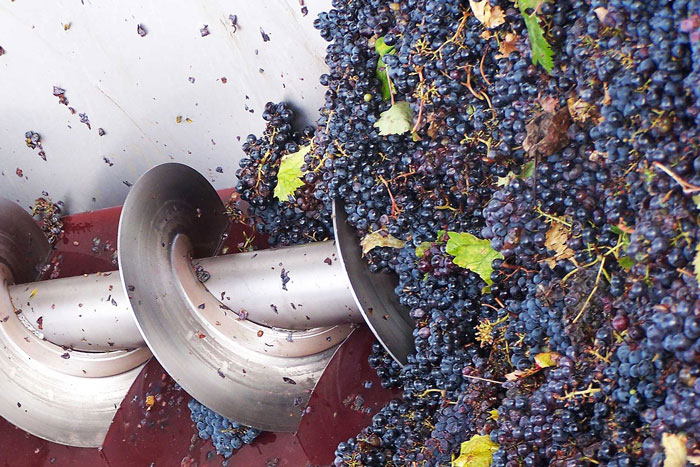
Conventional wine and sulfites
The use of sulfites may involve various stages of processing: from delivery to the winery to bottling.
European legislation (EC Reg. No 606/2009) has set the maximum limit to sulfites in a wine at 150 mg/l for reds and 200 mg/l for whites, rising to 200 and 250 mg/l for sweet wines, respectively, with specific exceptions for certain types of wine and needs determined by vintage trends in specific production areas.
Sulfites in organic wine
In the new EC Regulation 203/2012, the maximum amounts of sulfites in organic wine are 100 mg/l for reds and 150 mg/l for whites and rosés, with the possibility of increasing by 30 mg/l if the wine has more than 2 grams of residual sugar.
Can sulfites be added to organic wine?
The answer is yes, even in organic winemaking the addition of sulfites is allowed, although in slightly smaller amounts than in conventional wine.
Sulfites in natural wine
The sulfite limit in natural wine is 30 mg/liter for reds and 40 mg/liter for whites, which is the maximum amount of sulfites naturally produced during alcoholic fermentation.
Natural wine production is based on the idea of integrating new technologies with a philosophy of living that respects the environment and nature, trying to use as few additives and as little manipulation as possible.
Wine without added sulfites
The label statement “Contains sulfites” is mandatory when the concentration of sulfites in wine is greater than 10mg/liter, without distinguishing between sulfites produced naturally by fermentation or added and without the constraint of stating the precise amount.
In cases where the amount of sulfites in the wine is less than 10mg/liter, it is referred to as “wines without added sulfites,” and it is therefore possible to omit the label claim.
Generally, these are wines produced using selected yeasts and controlled fermentation.
Today there is a lot of attention to health, and therefore the most widespread trend, supported by theevolution of winery technologies, is toward a more targeted use of sulfur dioxide, which, in predisposed individuals, can induce headaches or allergic reactions.
Winemaker
In order to reduce the addition of sulfites, we need grapes that are as healthy as possible and a high level of hygiene in the winery, preventing the proliferation of undesirable bacteria at all stages of processing; thanks to the Onda® winemaker and its pump-less pumping over system and technical gas injection system, it is possible to carry out these processing steps in a controlled and protected environment.
The Onda® winemaker’s ability to vinify without the addition of sulfites or other allergens has been demonstrated on both an experimental and commercial scale.The result was achieved by using the Onda winemaker along with equipment and arrangements to ensure a gas-regulated redox environment at all stages of vinification (from grape delivery to the winery to bottling).

